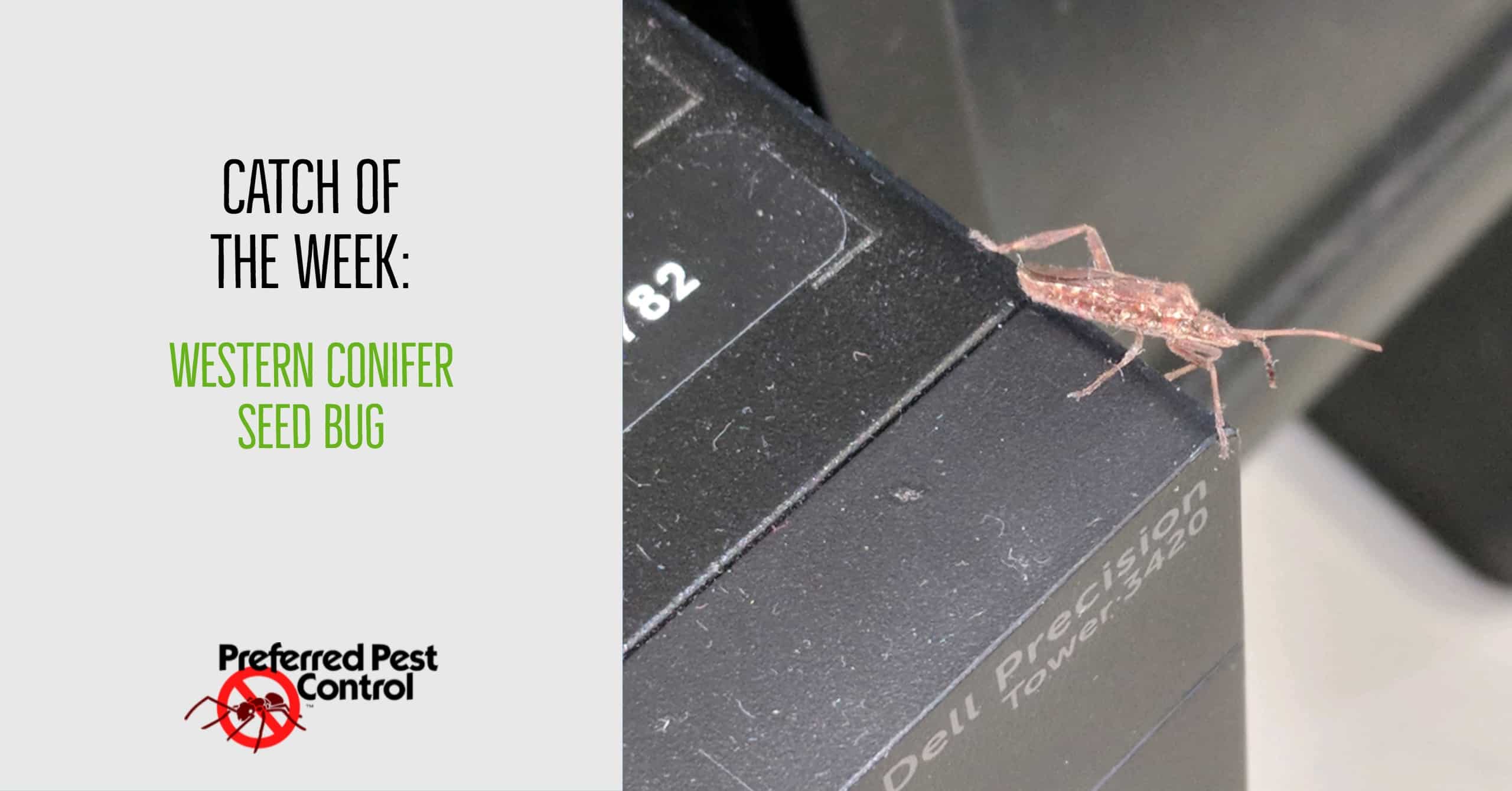
Catch of the Week: Western Conifer Seed Bug
December 19, 2017
Preferred Pest Control's Catch of the Week usually features the latest insect or pest our exterminators discover in the Des Moines area. However, occasionally we like to spotlight a fan's photo that shows the types of critters in their neighborhood. This week's unique insect was found in Ames by an Iowa State student. While studying in one of the computer labs on campus, they found a Western Conifer Seed Bug.
Even though our pest technicians weren't on campus to spot this unique bug, we've been getting quite a few calls for the Western Conifer Seed Bug in the Des Moines metro and can tell you the best way to keep them out of your home or business.
What is a Western Conifer Seed Bug?
The Western Conifer Seed Bug was originally only found on the Western side of the Rocky Mountains, but has since spread across the U.S. This interesting bug gets the second half of its name from the types of trees it lives in and feeds on. The Western Conifer Seed Bug uses its sucking mouthparts to feed on sap from seeds, cones and twigs of Douglas-fir trees and various other pine tree species. These habits can cause quite a bit of damage and even result in a loss of conifer seed crops. This is most alarming and needs to be controlled in the Northern-Pacific parts of the United States to prevent low seed yield.
This unique bug is becoming more prominent in Iowa and is usually an accidental and harmless invader during the fall and winter months. Like many insects, the Western Pine Conifer is seeking shelter from the cold weather and searching for a place to stay over the winter. Although these bugs do not sting, bite or cause damage to the home, it's best to get rid of Western Conifer Seed Bugs soon after spotting them.
How to Identify the Western Conifer Seed Bug
Fully-grown Seed Bugs are ¾ inch long and have brown on top. The dorsal, or upper side of the abdomen has an orange and black patchy pattern that is revealed during flight. The Western Conifer Seed Bug's flight pattern and buzzing sound produced while flying can sometimes resemble a bumble bee. The most unique feature of the Western Pine Conifer is the shape of its feet. This insect is part of a select few leaffooted bugs, named after the flat, leaf-like expansions of their hind legs.
How to Prevent Bugs From Getting Inside
It's best to prevent potential issues before you have a major pest problem in your home or business. Common entry points for insects, including the Western Conifer Seed Bug, includes cracks and gaps in windows, doors and siding on houses.
The 3 best ways to keep Western Conifer Seed Bugs and other insects out:
Sealing or caulking any crevices around your door or window frames and chimneys.
Replacing loose screen in windows or doors.
Screening off fireplace chimneys and attic or wall vents.
Preferred Pest has even more tips and tricks for preventing other common winter pests.
Pest Control and Prevention in Des Moines
If you think you've seen these unique bugs in your home or business, Preferred Pest can take care of it. Our exterminators offer quality services and prevent pest problems in the future. If you're dealing with pests trying to get inside your home as winter approaches, call Preferred Pest today at (515) 415-5550 or schedule an appointment online!
Similar Articles You Might Find Useful: